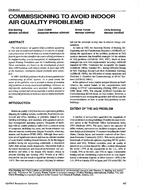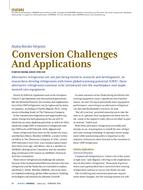The performance of a LiCl liquid-desiccant air conditioner was modelled with the following four types of regenerators – (1) air-dried, packed-bed units, (2) simple boilers, (3) multiple-effect boilers, and (4) engine-driven, vapour-compression distillation units. The simple boiler was modelled in two configurations – one in which steam is vented directly to the outdoor ambient, and the other in which the boiler operates at subatmospheric pressure and an air-cooled heat exchanger condenses the steam. For all systems, the absorber was a counterflow packed-bed unit. Before being sprayed onto the packed bed, the desiccant was cooled in a 67% effective cooler. At ARI indoor and outdoor conditions, and with the concentration set within the absorber so that cooling was provided at 400 cfm/ton (53.6 L/s.kW), the regenerators produced the following coefficients of performance (COPs) – (1) packed bed, 0.57 and 0.69 at 150 deg F (66 deg C) and 240 deg F (116 deg C) desiccant spray temperatures, (2) simple boiler, 0.67. 0.79, and 0.82 for steam saturation temperatures leaving the boiler at 212 deg F (100 deg C), 120 deg F (49 deg C), and 100 deg F (38 deg C), (3) multiple-effect boiler, 1.36 and 1.89 for double-effect and triple effect units operating with a 120 deg F (49 deg C) low-pressure steam saturation temperature, and (4) vapour-compression distillation, 2.4.
KEYWORDS: performance, heat exchangers, desiccants, unit air conditioners, calculating, boilers, absorbents, coefficient of performance
Citation: ASHRAE Trans. 1992, vol.98, Part 1, Paper number AN-92-3-2, 704-711, 7 figs., 1 tab., 3 refs.
Product Details
- Published:
- 1992
- File Size:
- 1 file , 990 KB
- Product Code(s):
- D-17923


